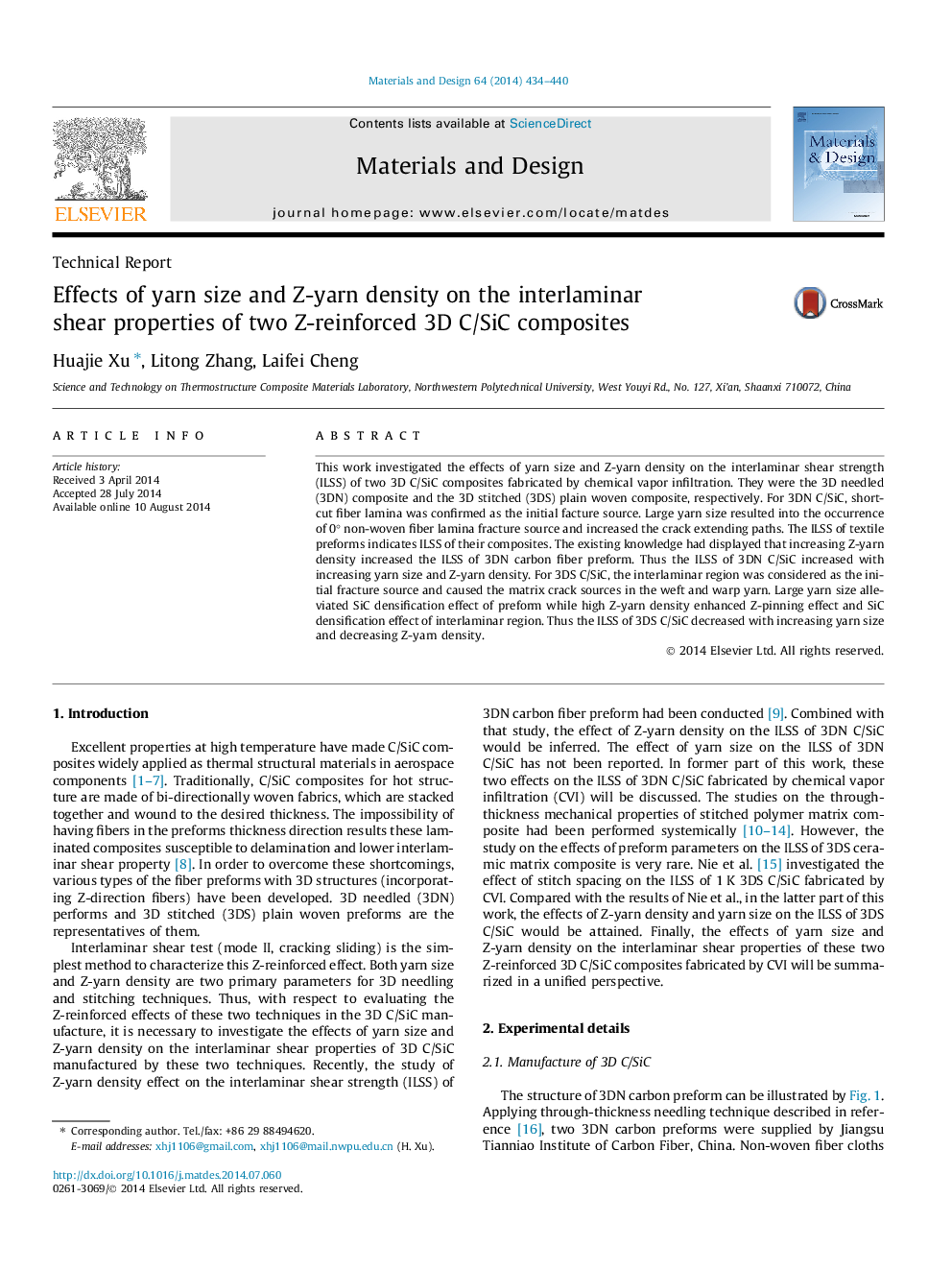| Article ID | Journal | Published Year | Pages | File Type |
|---|---|---|---|---|
| 828928 | Materials & Design (1980-2015) | 2014 | 7 Pages |
•Short fiber lamina is the initial fracture source of 3DN C/SiC.•Interlaminar region is the initial fracture source of 3DS C/SiC.•ILSS of 3DN and 3DS C/SiC changed inversely with increasing yarn size.•ILSS of both 3DN and 3DS C/SiC increases with increasing Z-yarn density.
This work investigated the effects of yarn size and Z-yarn density on the interlaminar shear strength (ILSS) of two 3D C/SiC composites fabricated by chemical vapor infiltration. They were the 3D needled (3DN) composite and the 3D stitched (3DS) plain woven composite, respectively. For 3DN C/SiC, short-cut fiber lamina was confirmed as the initial facture source. Large yarn size resulted into the occurrence of 0° non-woven fiber lamina fracture source and increased the crack extending paths. The ILSS of textile preforms indicates ILSS of their composites. The existing knowledge had displayed that increasing Z-yarn density increased the ILSS of 3DN carbon fiber preform. Thus the ILSS of 3DN C/SiC increased with increasing yarn size and Z-yarn density. For 3DS C/SiC, the interlaminar region was considered as the initial fracture source and caused the matrix crack sources in the weft and warp yarn. Large yarn size alleviated SiC densification effect of preform while high Z-yarn density enhanced Z-pinning effect and SiC densification effect of interlaminar region. Thus the ILSS of 3DS C/SiC decreased with increasing yarn size and decreasing Z-yarn density.
